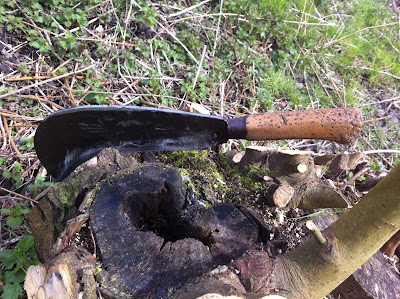However, it proved no match for the sodden ground and got stuck. It has a winch but the nearest stout tree was too far away. Eventually, I attached the winch cable to a small scrub willow, which was only about 3" in diameter. Surprisingly, it help well and I managed to pull the car out (sideways!) in just under 2 hours after dumping all the cargo in the middle of the field:
 |
| Bit muddy then... |
The problem with drainage on this ground, I'm beginning to discover, is that with the very fine sand, even a decent size of drainage pipe will clog up quite quickly. For example, this pipe has been in the trench for under a year and is already buried in several inches:
 |
| Clogged drainage |









